During our latest trip to Japan, we stayed in Kyoto for 11 nights. Besides visiting the city, we also used it as the base for various day trips in the area. During one of these day trips, we visited the beautiful area of Arashiyama. So, today I will share with you my Arashiyama – Japan Guide!
Arashiyama is a pleasant district in the western outskirts of Kyoto. The area has been a popular destination since the Heian Period (794-1185) when nobles would enjoy its natural setting. Arashiyama is particularly popular during the cherry blossom and autumn colour seasons.
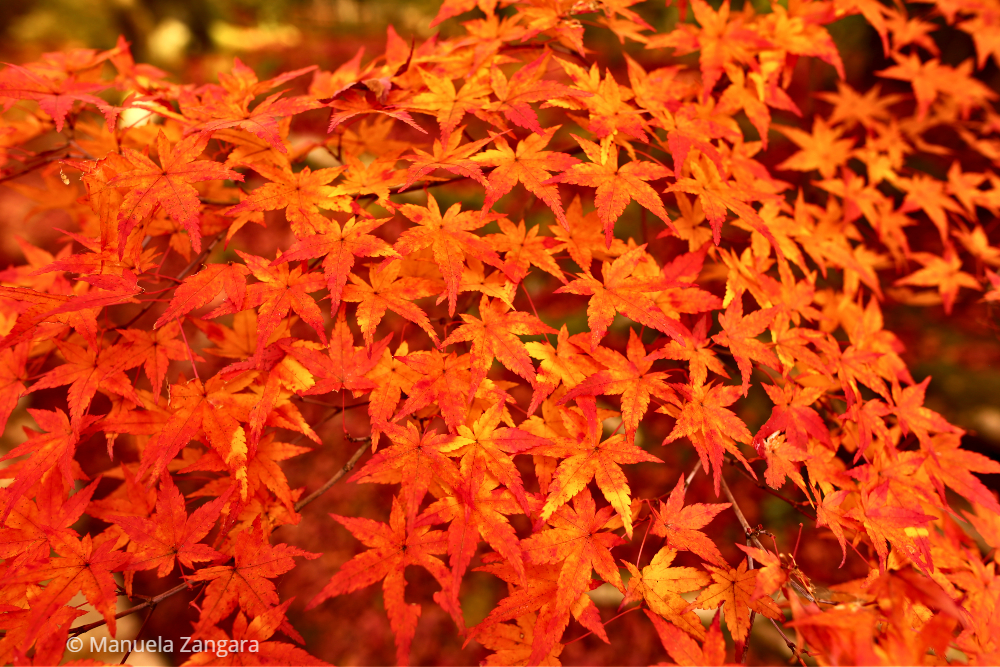
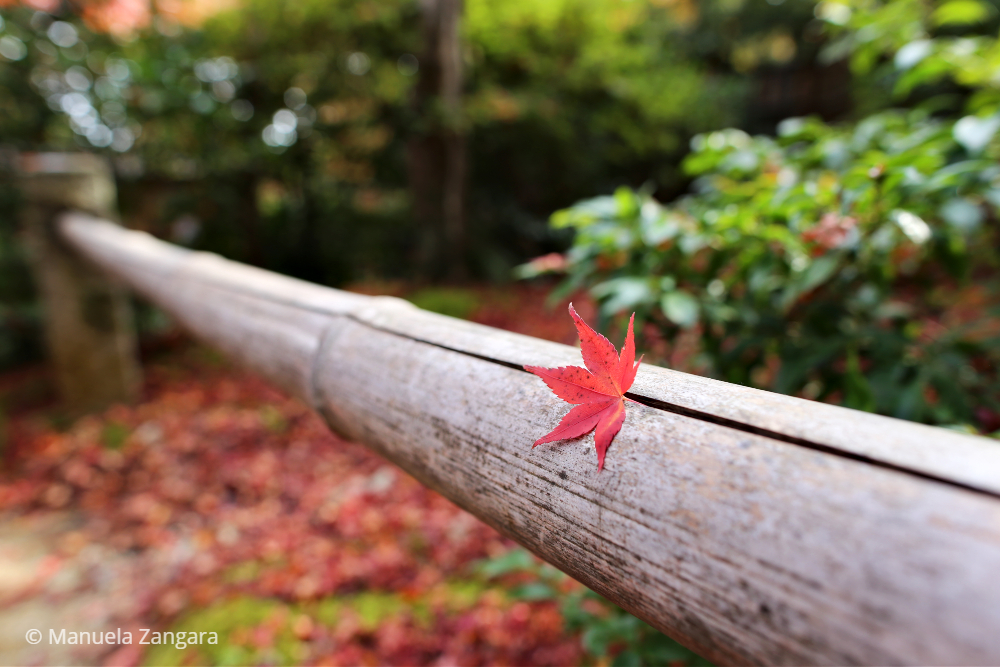
We had already visited some of the attractions during our first trip to Japan back in 2015, but this time we decided to explore it better.
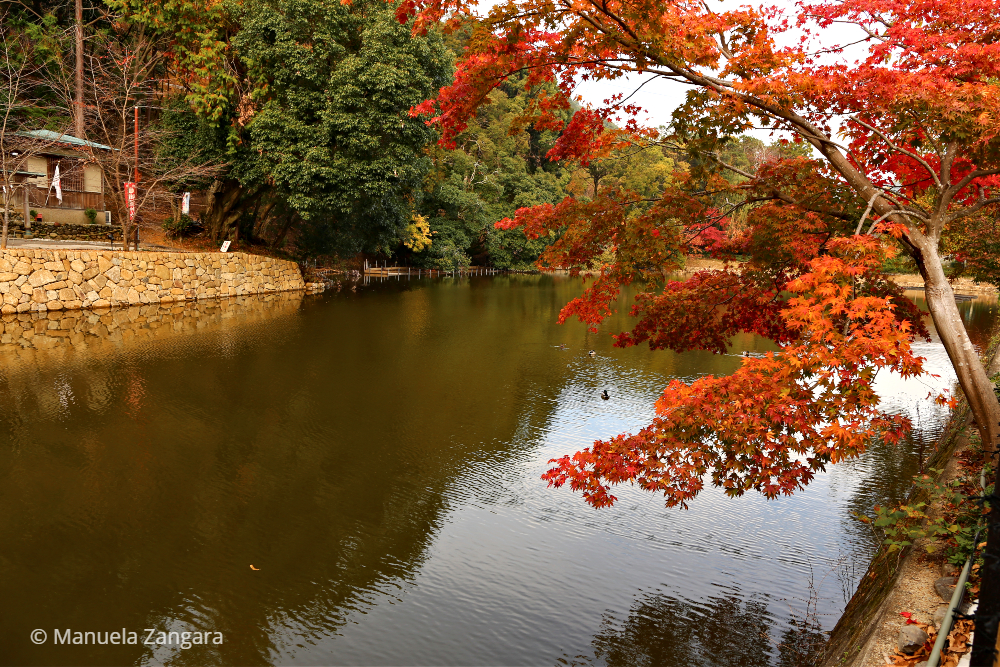

The Togetsukyo Bridge is Arashiyama’s well known, central landmark. Many small shops, restaurants, and other attractions are found nearby, including Tenryuji Temple, Arashiyama’s famous bamboo forest and pleasure boats that are available for rent on the river.

North of central Arashiyama the atmosphere becomes less touristy and more rural, with several small temples scattered along the base of the wooded mountains. And this area was a pleasant surprise, especially the part around Saga Toriimoto, which is a beautifully preserved area.


The autumn colours were at their peak when we visited the last week of November, so Arashiyama was packed with tourists, but still very enjoyable.


SIGHTSEEING
You can easily walk from one place to the other once in Arashiyama. There are quite a few temples to visit, so do not stop at the Bamboo Grove! The further up you go, the more beautiful and less crowded it gets!
Togetsukyo Bridge
The Togetsukyo Bridge (aka the “Moon Crossing Bridge”) is Arashiyama’s most iconic landmark. It was originally built during the Heian Period (794-1185) and most recently reconstructed in the 1930s. The bridge looks particularly attractive in combination with the forested mountainside in the background. A riverside park with dozens of cherry trees is located just adjacent to the bridge.

Bamboo Groves
The walking paths that cut through the bamboo groves make for a nice walk or bicycle ride. Go early, as it tends to get PACKED with people! In fact, we arrived at around 7:30 AM and there were already plenty of people taking pictures!

There was even a recently married couple taking their wedding photos.

Okochi Sanso Villa
This is the former villa of the popular actor Okochi Denjiro (1896-1962), located in the back of Arashiyama’s bamboo groves. The buildings can only be viewed from the outside. We did not enter the grounds.
Monkey Park Iwatayama
The entrance to the monkey park can be found just south of the Togetsukyo Bridge. After hiking uphill for about ten minutes, visitors will find an open area with over a hundred monkeys roaming freely. There are also nice views down onto the city. We did not visit this park, as we had already seen the Snow Monkey at Jigokudani.
Saga-Toriimoto Preserved Street
Much of this street along the way to the Adashino Nenbutsuji Temple has been preserved in the style of the Meiji Period (1868-1912). Many of the buildings are traditional machiya (“townhouses”) that served as private residences but have since been converted into shops and restaurants.

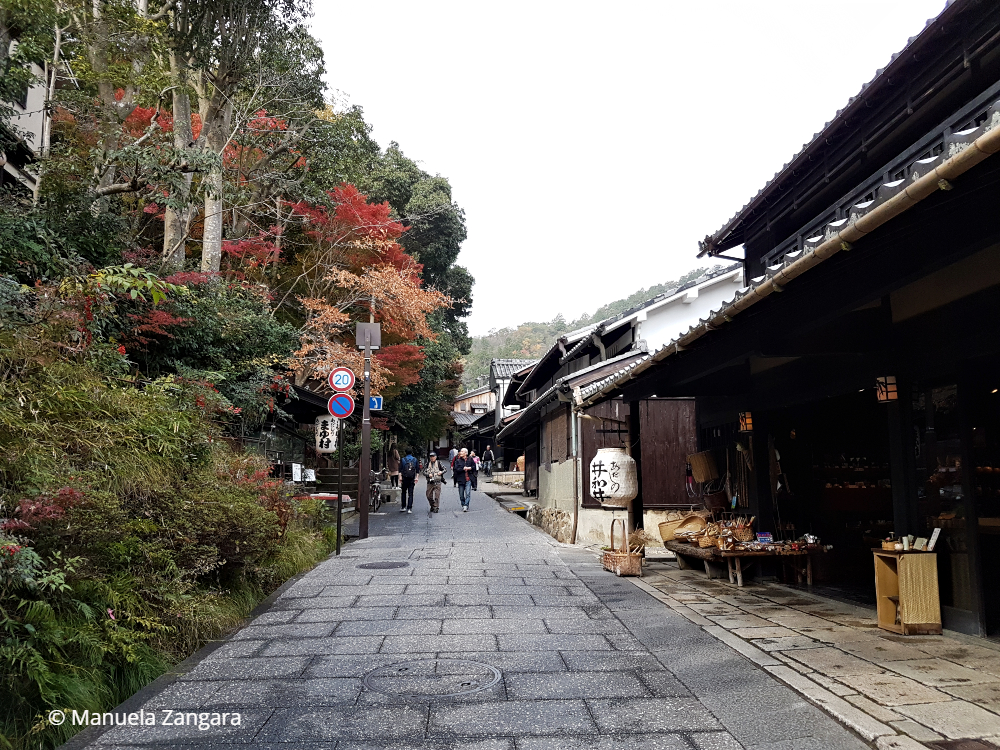
I particularly liked this area and it was really quiet!



Rakushisha Residence
The Rakushisha Residence is a thatched hut that belonged to the 17th-century haiku poet Mukai Kyorai. Mukai named his residence Rakushisha (“fallen persimmon hut”) after a storm had taken down the fruits of the surrounding trees.
Tenryuji Temple
Ranked among Kyoto’s five great Zen temples, Tenryuji is the largest and most impressive temple in Arashiyama and the garden around the pond area is particularly impressive in autumn!
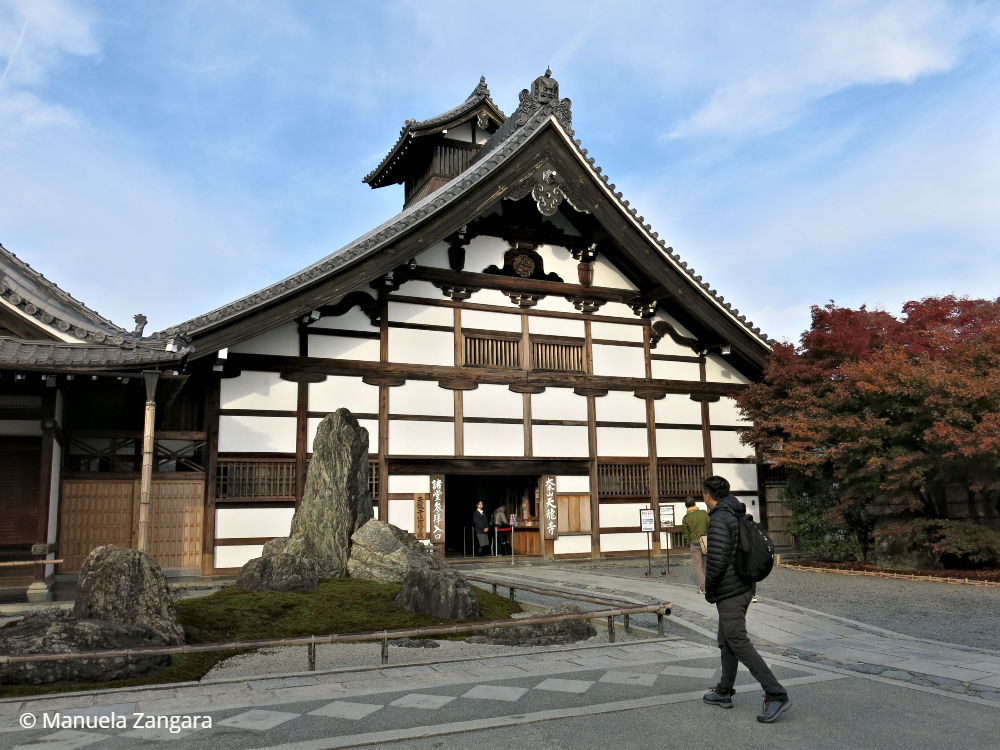

We had already visited this temple in 2015 and I was looking forward to going back in autumn. I was definitely NOT disappointed!


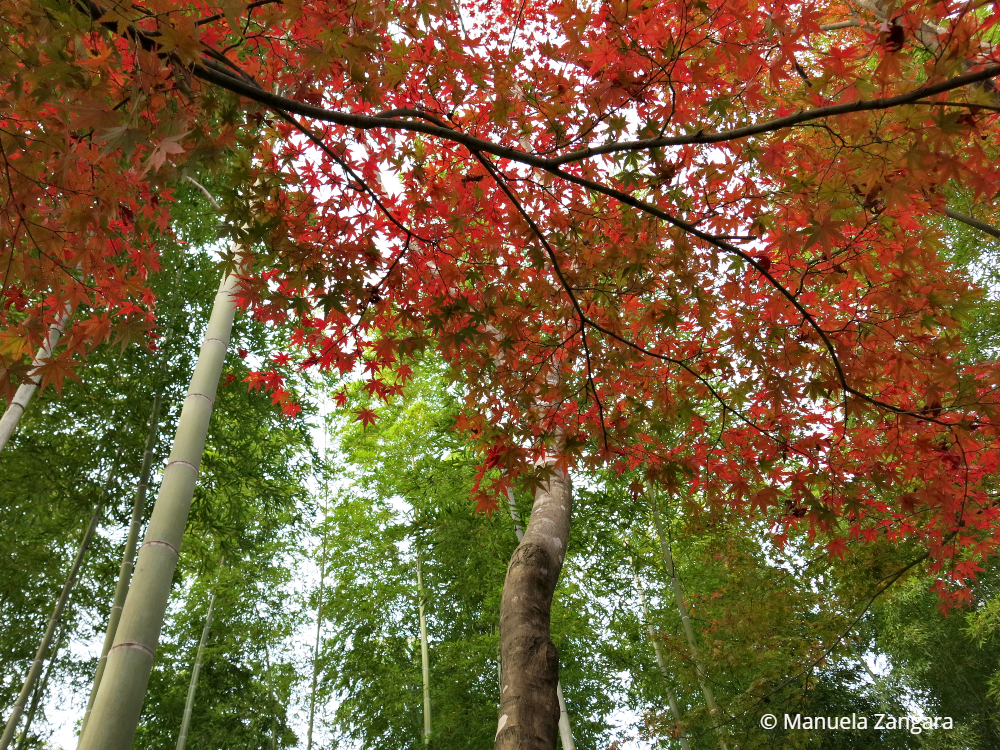
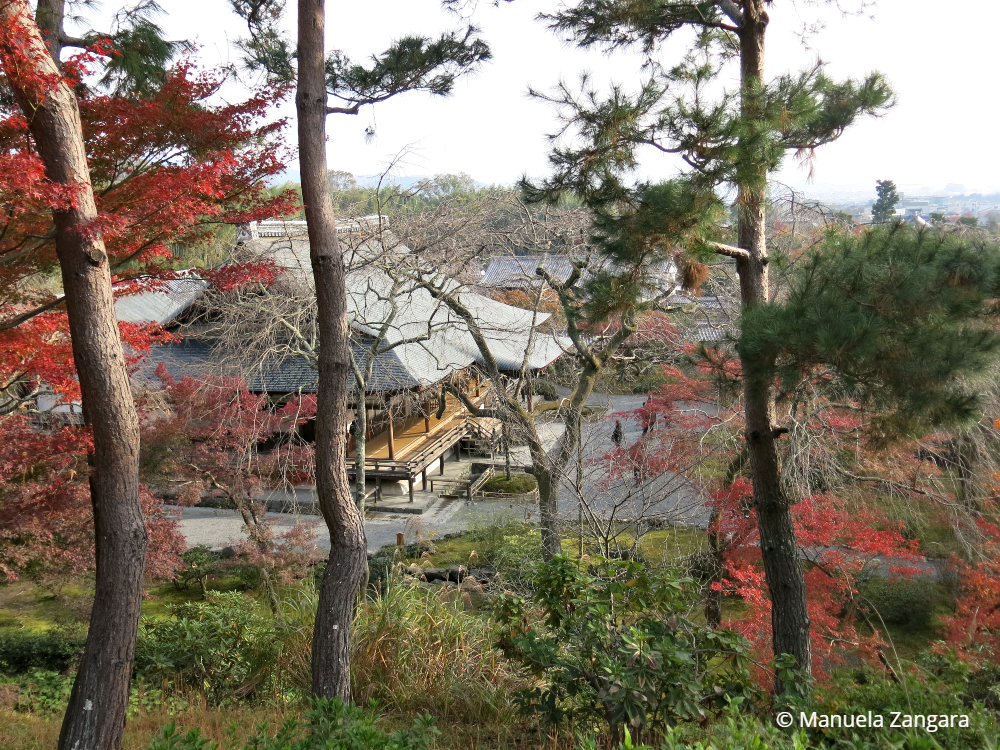
Just a tip… bring some tissues with you. It was the ONLY place in Japan where we had to pay for toilet paper! hahahaha
The pond area was amazingly beautiful!


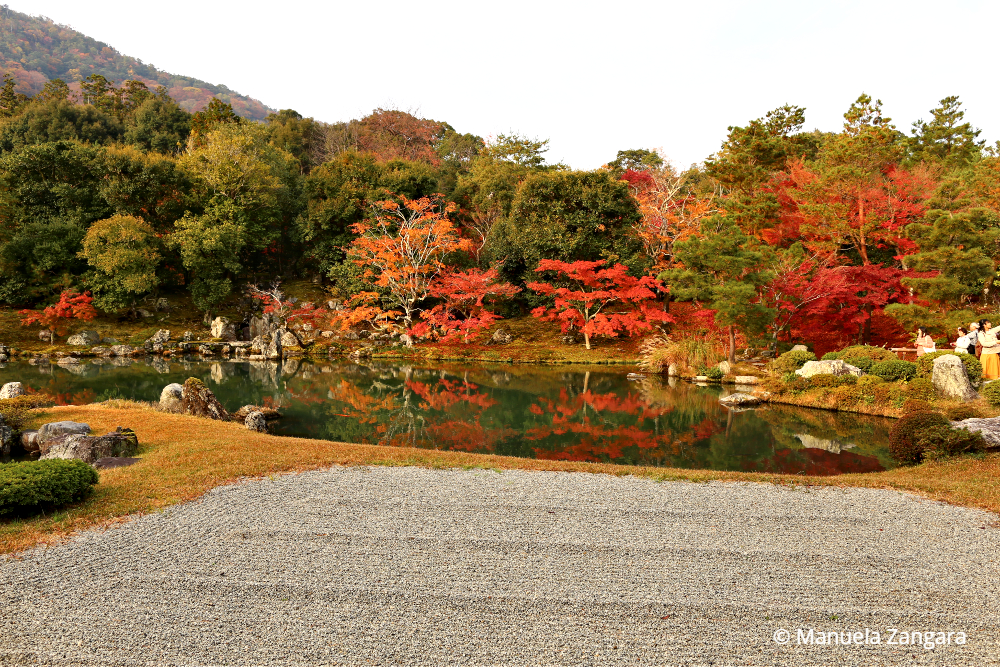
Daikakuji Temple
Daikakuji is a temple of the Shingon sect of Japanese Buddhism. Formerly the residence of an emperor, the buildings were converted into a temple in 876. During its history the temple traditionally had members of the imperial family serve as the head priest. Beside the main temple buildings, there is a large pond and a pagoda. We did not visit this temple, but we passed in front of it on the bus and it looked really busy.
Jojakkoji Temple
This mountainside temple was founded in 1596. With small, attractive buildings and gates, the temple has a quiet and understated atmosphere.



Maple trees and moss are located just beside the paths and stairs that lead across the temple grounds. From a number of spots, visitors can enjoy views over Kyoto.


This was one of my absolute favourite temples for autumn colours for the whole trip! The colours were amazing!

Nisonin Temple
Similar to Jojakkoji, Nisonin Temple is a hillside temple with slightly larger and imposing buildings. A generally understated atmosphere on the temple grounds is partly due to the overhanging trees along the approach.

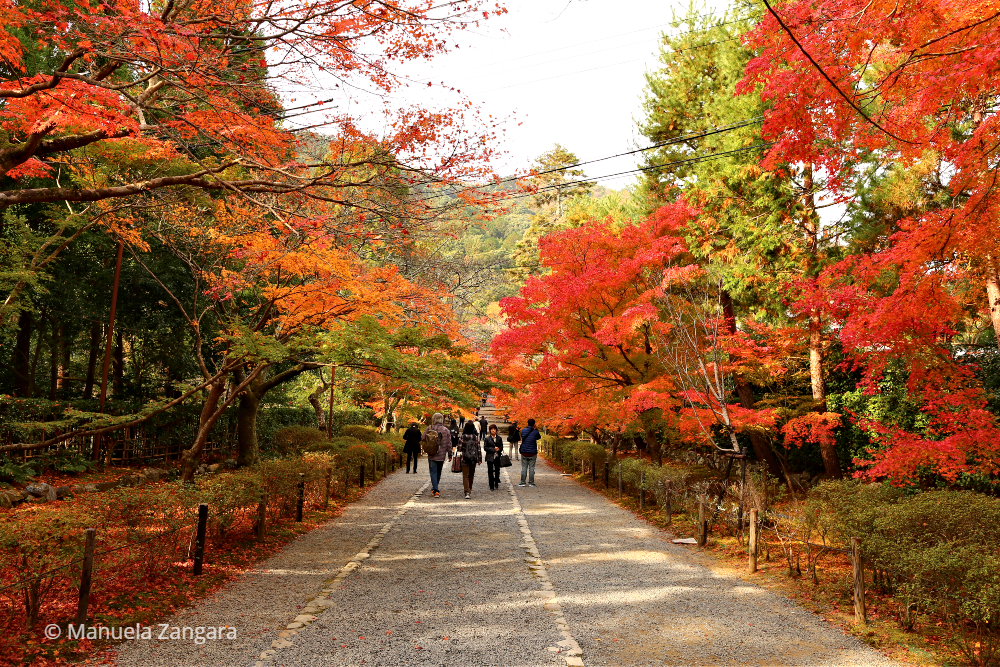
The autumn colours were beautiful here as well.




And the atmosphere was serene!
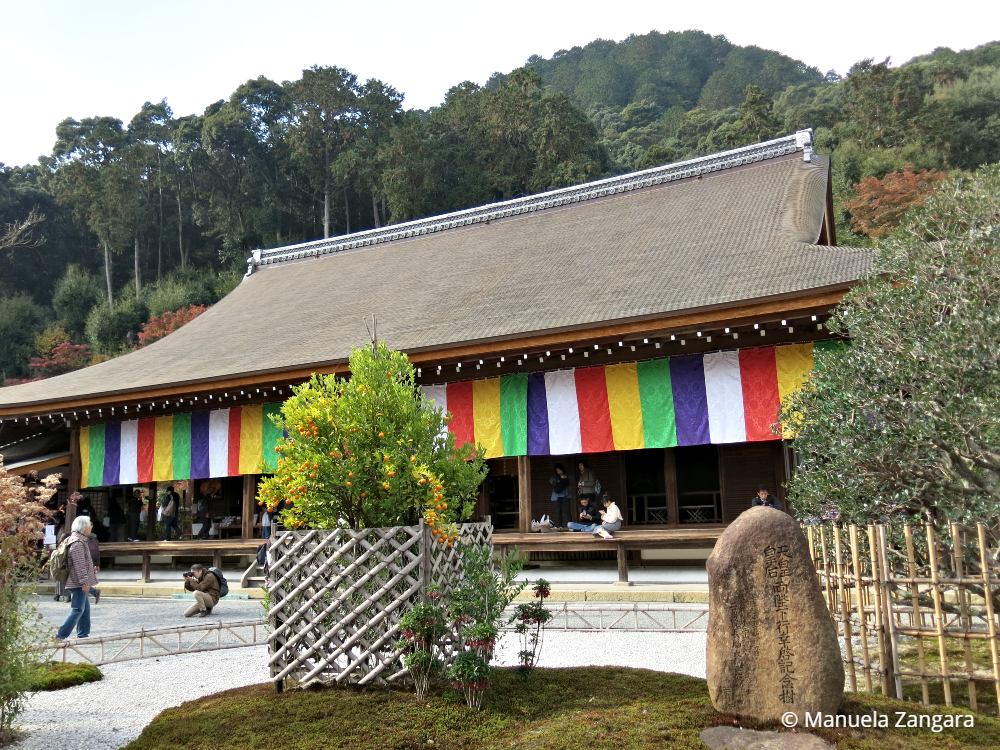

Gioji Temple
Gioji is even more nestled into the forest than Jojakkoji and Nisonin. It is known for its moss garden that is punctuated with tall maple trees.
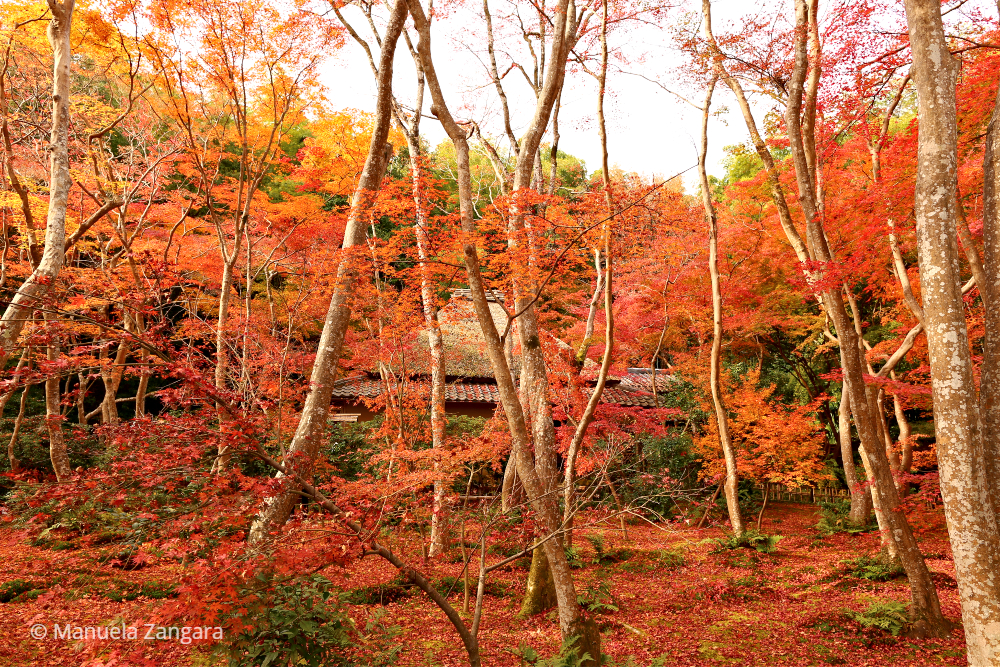


The temple’s entrance gate and small main hall have thatched roofs. The latter has an attractive round window looking into the gardens.
I also loved all the flowers everywhere.
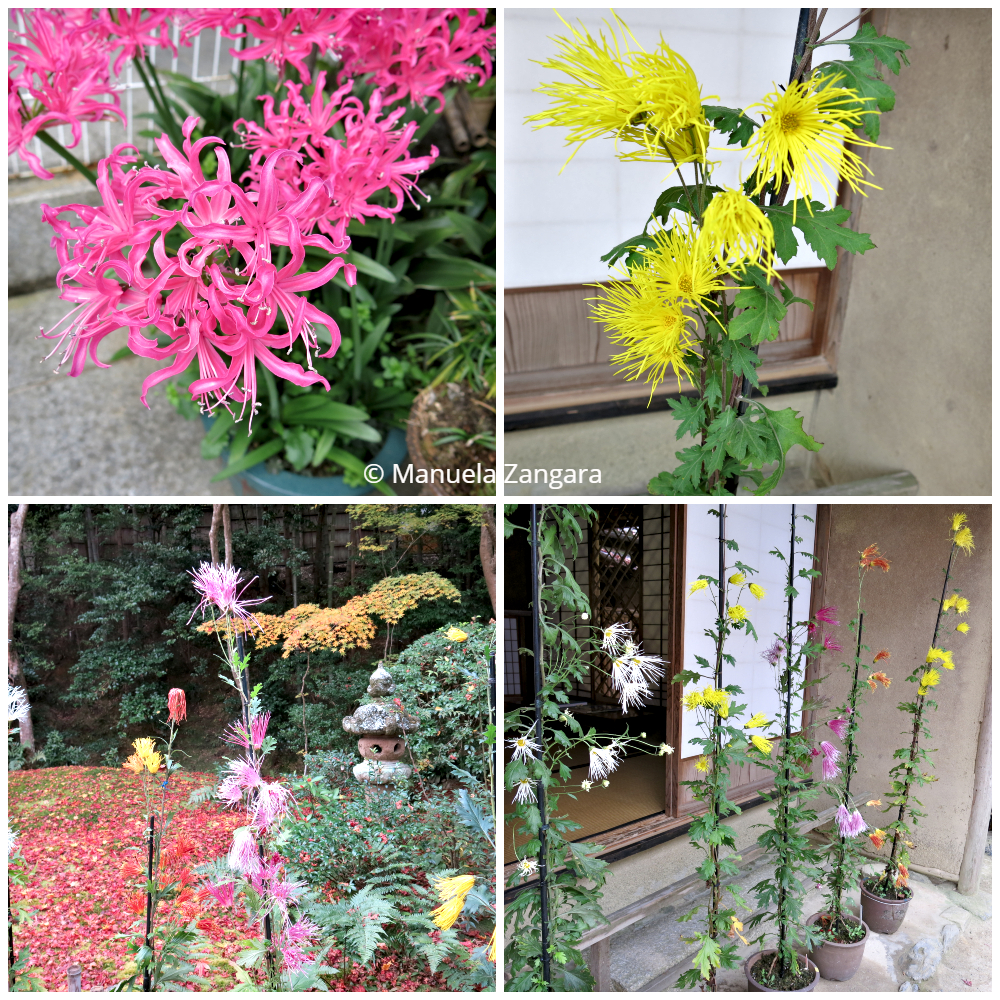
And the maple trees growing surrounded by bamboo!
Adashino Nenbutsuji Temple
Adashino Nenbutsuji is located at the end of the Saga-Toriimoto Preserved Street.
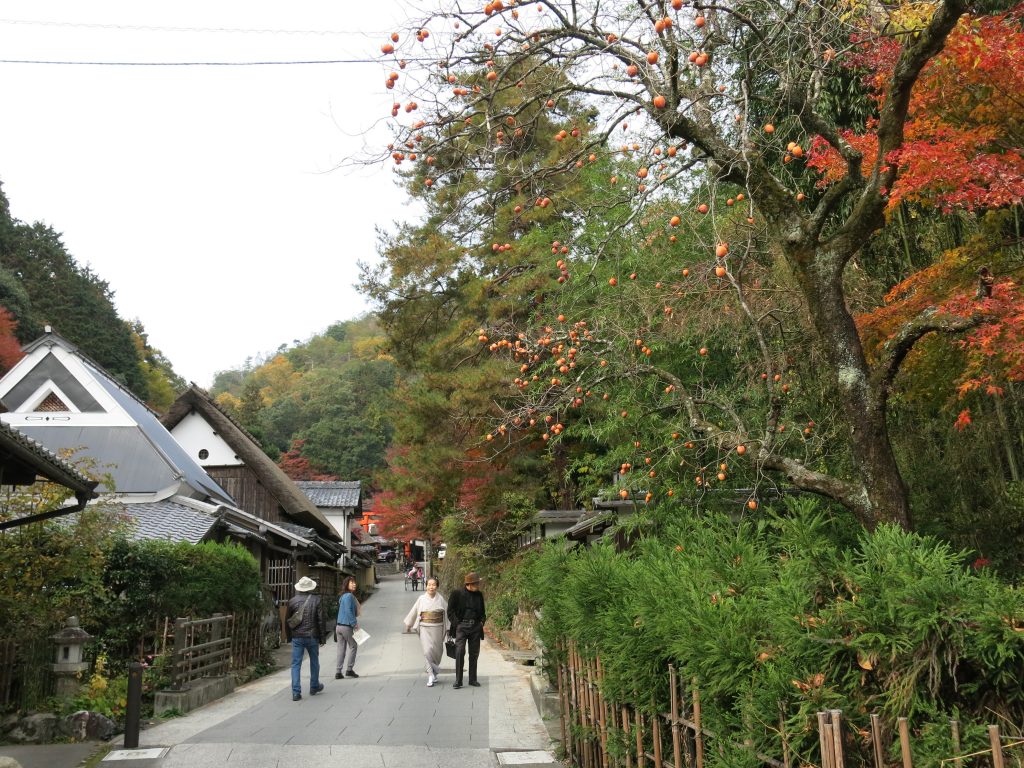


The temple was founded in the early 9th century when the famous monk Kobo Daishi placed stone statues for the souls of the dead here.


Today, the temple grounds are covered by hundreds of such stone statues. In the back of the temple, a short path leads through a bamboo forest.


There is also a small cemetery in the temple grounds. I really loved this temple and the autumn colours were so pretty!
Otagi Nenbutsuji Temple
Another ten-minute walk north of the similarly named Adashino Nenbutsuji, the Otagi Nenbutsuji Temple is famous for its 1200 stone statues of rakan, devoted followers of Buddhism, each with a different facial expression.


Created relatively recently in the 1980s and early 1990s, the many statues stand across the temple grounds which cover part of a forested mountain slope.
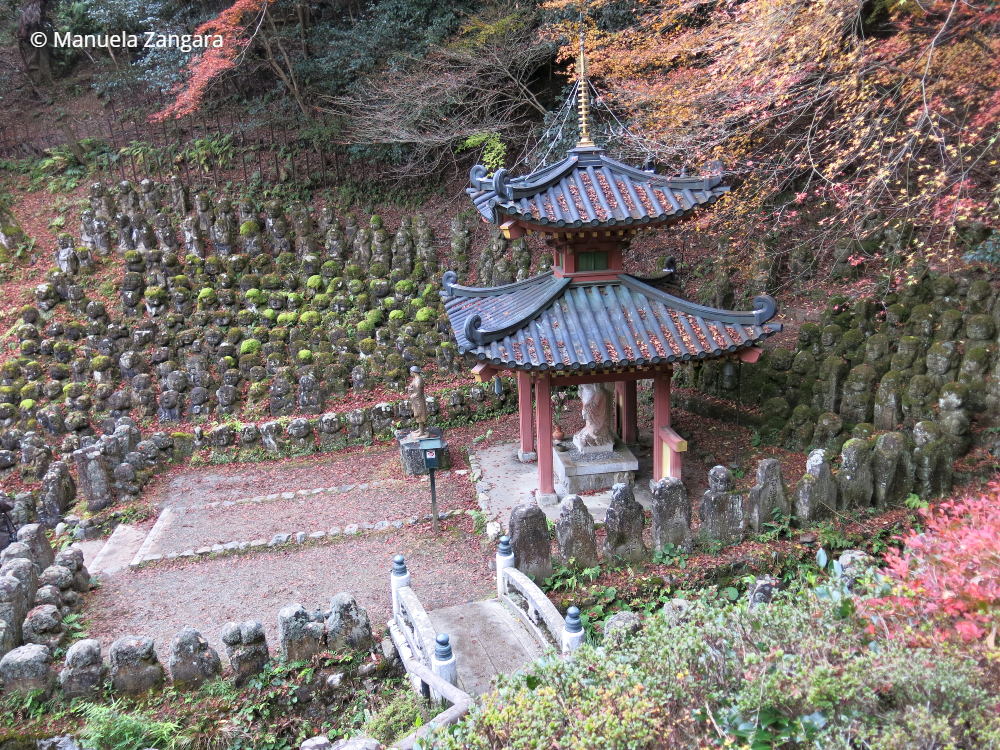
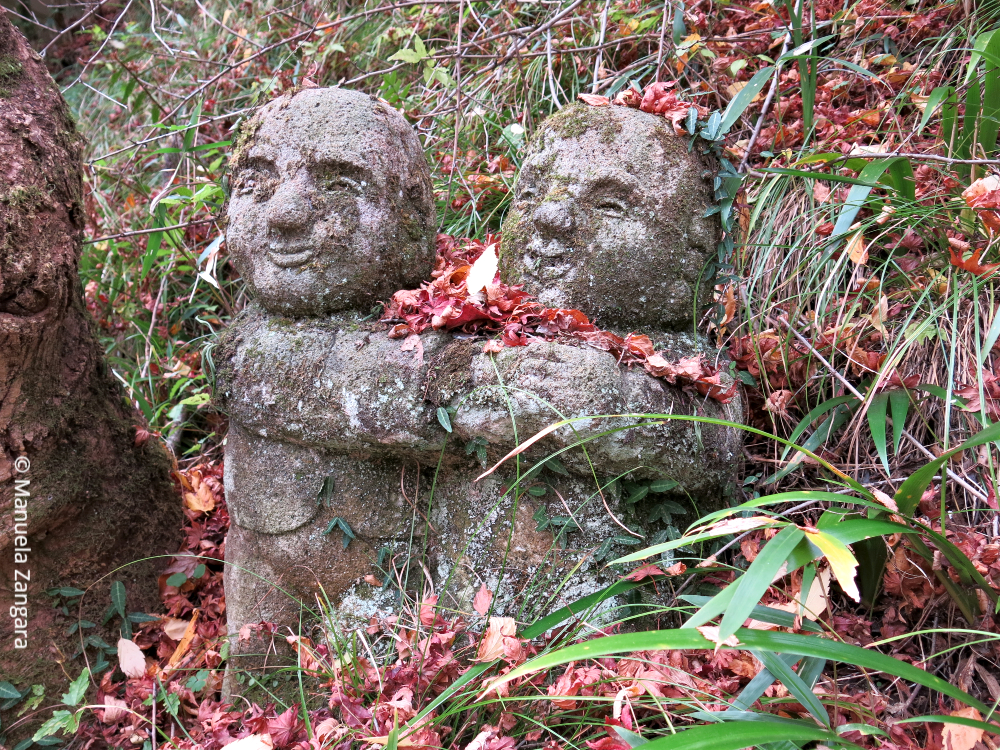
This was another fun visit! The statues are so many and they are ALL different!



You could spend hours just looking at all of them!


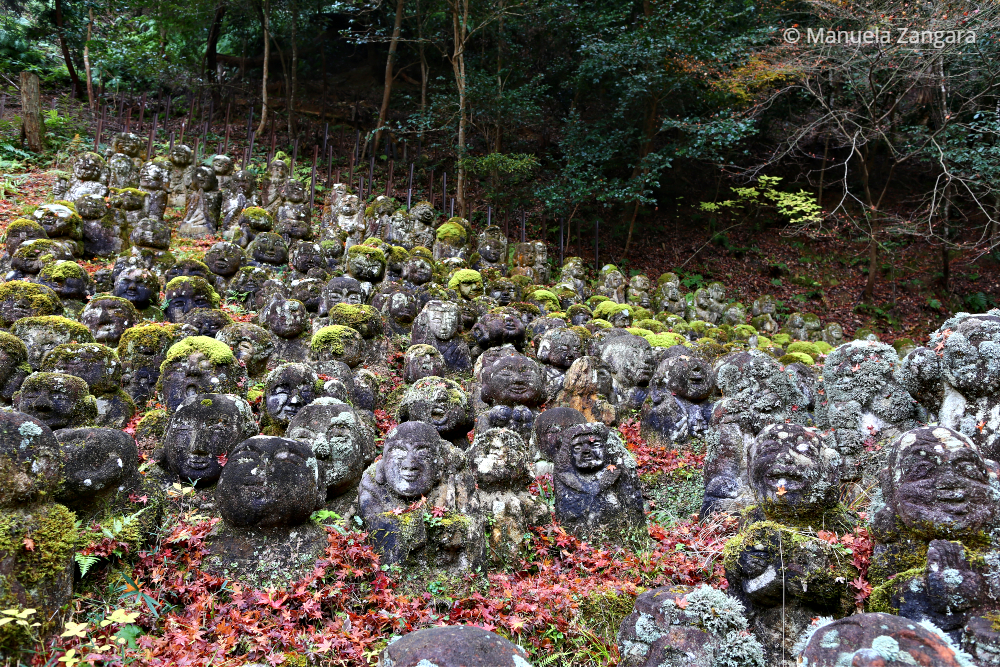
ACTIVITIES
Saga Scenic Railway
The Saga Scenic Railway runs from Arashiyama to Kameoka, alongside the Hozu River. The trains travel at a maximum speed of about 25 km/h during their 25-minute journey, so passengers can enjoy the scenery without it rushing by too quickly.
We really wanted to ride on this, but we found no seats even though we tried booking 2 weeks before!! So, book early!
Hozu River Boat Tour
Departing from near the JR Kameoka Station, the Hozu River Boat Tour is a two-hour trip that takes passengers down the Hozu River to the Togetsukyo Bridge. The trip passes by the forested mountainsides along the river. The boats seat 25 people and are heated in the winter.
Cormorant Fishing (Ukai)
Daily at 19:00 and 20:00 in July and August, daily at 18:30 and 19:30 September 1-23. Summer only.
The Hozu River in Arashiyama is one of about a dozen rivers in Japan where ukai, a traditional fishing method using cormorants, is practiced from July until late September. Tourists can observe the action from paid sightseeing boat cruises or from ashore. Cruises depart from the boat pier near the Togetsukyo Bridge.
I must admit that when we had first visited Arashiyama in 2015 I had not fallen in love with it. We had only visited the Bamboo forest and Tenryuji, the weather was gloomy and there were so many people it felt uncomfortable.
This time around I was completely blown away. My recommendation is to go early to the Bamboo Grove and Tenruyji and then walk up to Otagi Nenbutsuji stopping along the way to visit the temples and Saga Toriimoto. The further up you go, the less crowded and touristy and the more beautiful and quiet it gets.
After visiting Otagi Nenbutsuji Temple, we took bus #94 opposite the temple entrance to the Arashiyama Randen Station.
When visiting Kyoto, Arashiyama is definitely worth a day trip!
FOOD
Miffy Sakura Bakery
We stopped at the Miffy Sakura Bakery before going back to Kyoto as our youngest daughter is a huge Miffy fan!
They sell all sorts of Miffy merchandise and Miffy shaped food.
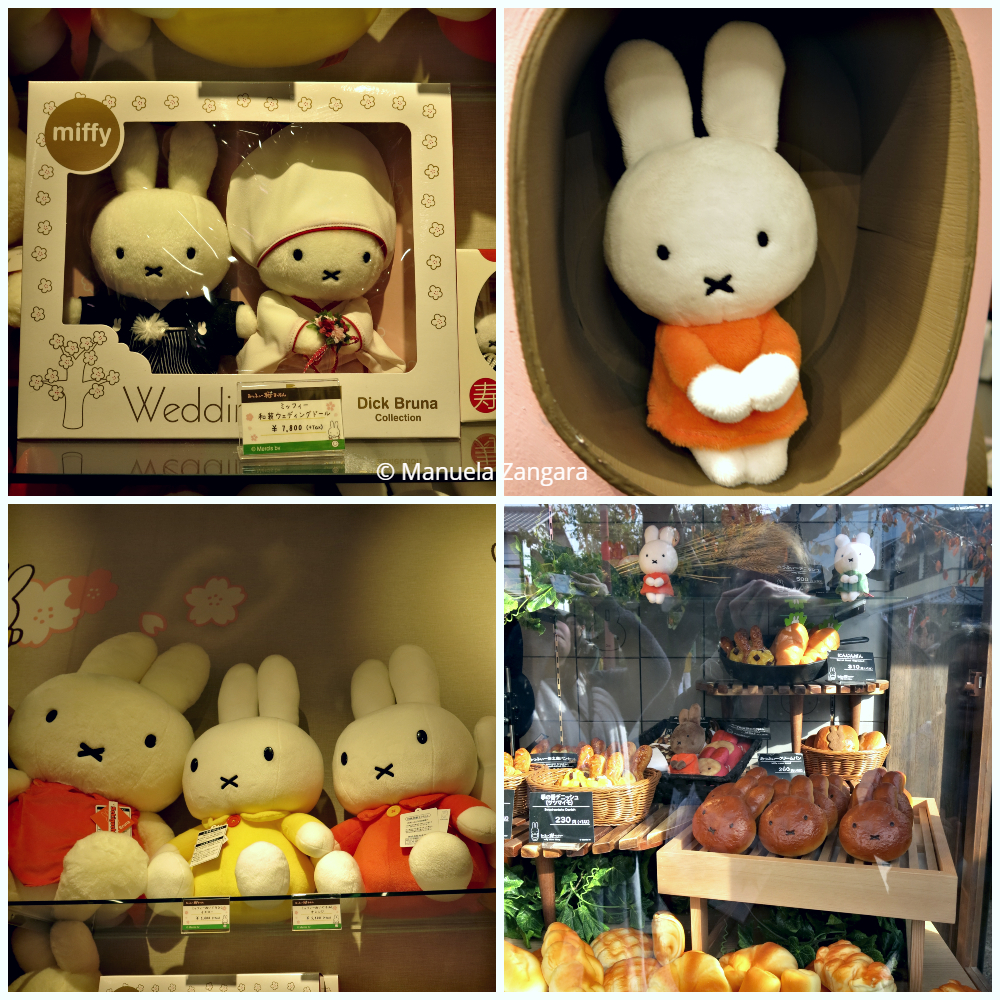
It’s a nice stop if you like kawaii things.
ACCOMMODATION
We stayed in a rental house in Kyoto, check it out here.
HOW TO GET AROUND ARASHIYAMA
Definitely on foot!
RESOURCES ON MSM
RECIPES:
TRAVEL IN JAPAN:
Nara & Fushimi Inari guide – Japan
Haru Cooking Class Kyoto – Japan Guide
Nagashima and Nabana no Sato – Japan Guide
Jigokudani Monkey Park Guide – Japan
Miyajima Autumn 2018 – Japan Guide
Kunisaki Peninsula – Japan Guide
Don’t forget to pin this post!
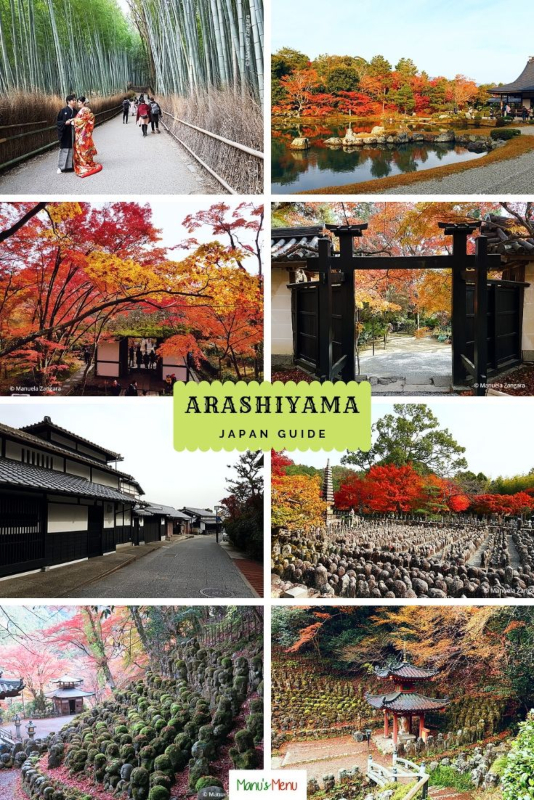
HOW TO GET TO ARASHIYAMA FROM KYOTO
By Japan Railways (JR)
The fastest access from Kyoto Station to Arashiyama is provided by the JR Sagano Line (also known as JR Sanin Line). The one-way ride to Saga-Arashiyama Station takes 15 minutes and it’s included on the JR pass.
By Keifuku Railways (Randen)
The small trains on the Keifuku Arashiyama Line connect Arashiyama with Omiya Station at the intersection of Shijo Street and Omiya Street in central Kyoto (20 minutes).
At the Randen Station, you can also visit the Kimono Forest, a collection of cylinder-shaped pillars along the tracks.


It is called a “forest” since the pillars are clustered like a forest and the kimono is displayed on each of the pillars. This is particularly beautiful at night when the pillars are all lit up!




















Leave a Reply